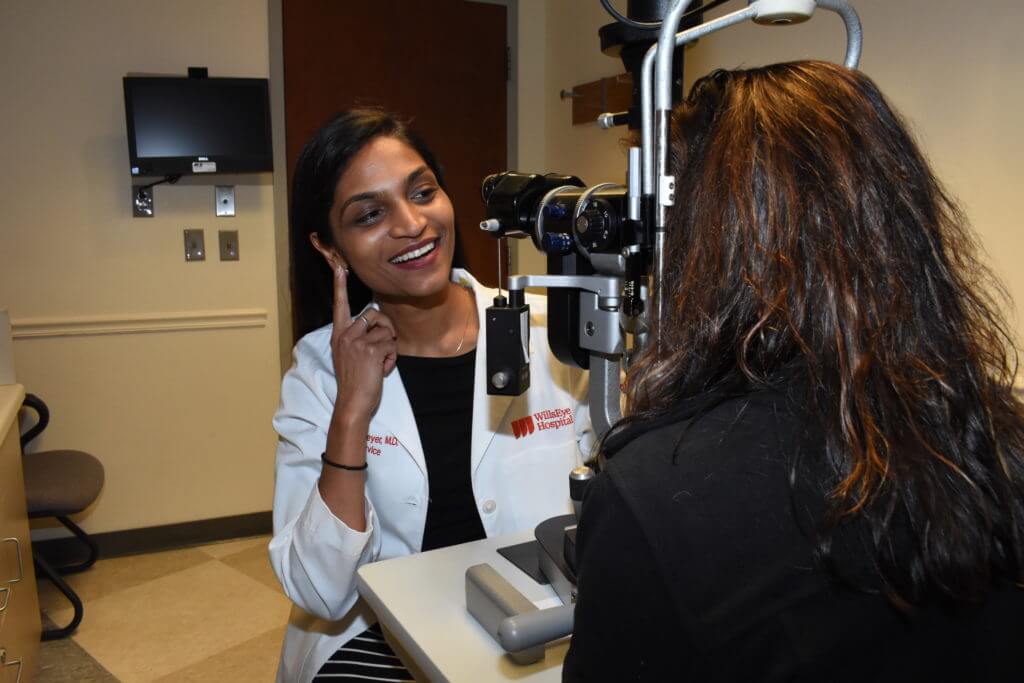TEST OF FUNCTION OF THE OPTIC NERVE
Visual Field Test. You will be asked to cover your left eye with a patch and then your chin will be placed in the chin rest area of the visual field machine. The machine looks like a big bowl. Once your head is positioned correctly and the proper lens (based on your glasses prescription) is placed in front of your eye, you will be given a button to press when you see a light flash. You should see a light source in the center of the dome (fixation light). You are to look at the fixation light for the duration of the test.
While looking at the fixation lights, white lights will flash throughout the “dome.” Every time you see a white light flash, you should push the button. The white lights will start out bright, but become dimmer as the test progresses. They will become very difficult to see – the test is designed this way – it will test not only how far into the periphery you see, but also how sensitive your peripheral vision is to very dim lights.
It is completely normal to miss some flashes so it is best to stay calm even if you feel like you have not seen a light for a long time.

























